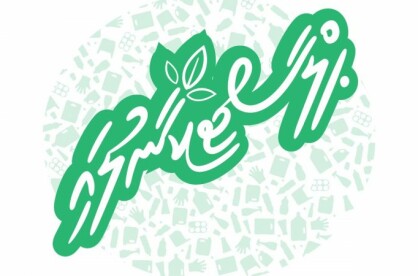Gang violence — the first step
The issue of gangs appear more multi-layered than just "evil minded" groups engaging in criminality. Is society ready to save their youth?

Source: AP
The issue of gangs appear more multi-layered than just "evil minded" groups engaging in criminality. Is society ready to save their youth?

Source: AP
When one hears the word gangs, it is very quickly associated with criminality. The generic taboo one hears growing up in this society, especially with the depictions of movies and books, is how gangs are inherently evil or troublesome, yet why is there a prevalence of Maldivian youth involved one way or other in this conundrum? And what can be done to circumvent it?
Over half of the entire population of Maldives is stuffed into the Greater Malé Region, and it is no wonder that the assessment of this region stands a league apart from the study of anywhere else in the country. While there are certain groups that could be defined as gangs with criminal intentions in areas beyond Malé, the main statistics show that even the total crimes reported in Malé and the surrounding area matches or even outweighs that of the other islands.
Even though Police reports do not specify per se which crimes were indeed connected to gangs and which were not, looking at the statistics it is easy to see that theft, robbery, drug use and distribution, as well as assault numbers would not be this high in common society were it not commonly associated with gangs. News reports over the years have claimed the major criminal activities as gang related, taking from eyewitness reports and testimonies, so overall, gang violence can be attributed to the larger share in the crime rates in this country.
As per external research, risk factors include poverty — while fairly minimum until the pandemic, the World Bank reports that the poverty rate has increased from an estimated 2.1 per-cent in 2019 to 7.2 percent in 2020 — as well as breakdown of family systems — Maldives achieved world record status with over 10 divorces per 1,000 inhabitants, per year — and high domestic violence situations — Police reports that over four percent of all crimes reported in 2021 alone, with over 160 cases, without counting petty crimes of theft and drug related activities, are reported domestic violence situations — just to name a few. Yet when digging deeper, these factors are not exactly what drives the Maldivian youth into violence in groups. It is not the life of crime that attracts the youth into these situations in the first place.
Looking into the first step of this perilous downward spiral, it is important to take into account the risk factors faced as per the experiences of the victims of this vicious cycle.
Those interviewed, though fairly limited, in the forming of this article drew parallels in their respective nudges into this life. Both state that they had realised it was a lot to do with parental neglect that drew them to spend more time with their friends, eventually forming what would be later described as a gang. Both came from different situations, one being an only child and the other being the youngest sibling. This lack of a stimulating childhood encouraged them to find what they lacked amongst a fraternity, and they claim that their story is not much different from those of their groups.
They further point out that the education system did not cater to the different intelligence quotients they were endowed with. A requirement to excel in all subjects forced brilliant minds to deviate from their studies even if some of them were extremely apt at certain subjects, such as mathematics, language, or the sciences. Added to this, some members attributed to gangs are known ‘straight A’ students as well, yet the system did not cater to their needs as such that they would be falling behind in the classroom yet achieve excellent results on the exams.
The lack of scope for recreational activities also causes a lacuna that is filled with the time spent amongst peers. It has always been a fact of contention that the Maldivian youth development programs focus too heavily on certain sports and leave out the rest of the activities the youth are commonly interested in, and this, the respondents claim, made them more intent on making these opportunities for themselves rather than wait on the authorities to provide it for them. Activities such as motorsports, esports, recreational activities and spaces were not present on a societal scale, forcing them to participate in them in ways the society found either illegal or disorganised.
Furthermore, the importance of mental health had only begun gaining traction on a policy making level recently. Before then, severe cases were treated as delinquency, forcing the youth victims into dependancy on street drugs for ‘ease of mind’, the respondents claimed. One of the respondents is a diagnosed patient now, and this was one of the misunderstood aspects about them that created the rift between them and their family, while it was understood and accepted amongst friends they found elsewhere. There are countless individuals whose dependancy on substances has gone beyond their control, leading them further down the spiral into criminality to support their habits.
Another factor was the lack of economic freedom in the Maldives. Job security was non-existent for any youth who had found themselves involved unwittingly in petty criminality due to gang affiliation, and a police record ostracises them further. This led to some of their peers getting involved in drug trafficking and smuggling, further accentuating the country's drug epidemic, yet the cycle does not have any chance of halting without proper government intervention.
Thankfully, the respondents who helped formulate this writing have managed to leave that life behind and prosper in legitimacy, thanks to the fact that neither of them have a police record. However, the point that saddens them the most is how their friends who weren’t so lucky are either known criminals and traffickers, incarcerated, or dead due to the inter-gang violence. When such a fraternity is born, it comes with a sense of brotherhood that sounds a lot like ‘us against them’, and against the law and beyond it this brotherhood is amplified. Inter-gang violence is in itself a complex topic to address, especially in the face of a lack of any studies since after 2012.
This is just the surface of the problem that the country faces, however localised to the capital city, and this also amplifies income disparity within the society as well.
The youth deserve a second chance, but if that can’t be done, then the coming generations deserve a society, both at home and in the neighbourhood, that does not lead them into this vicious cycle.



